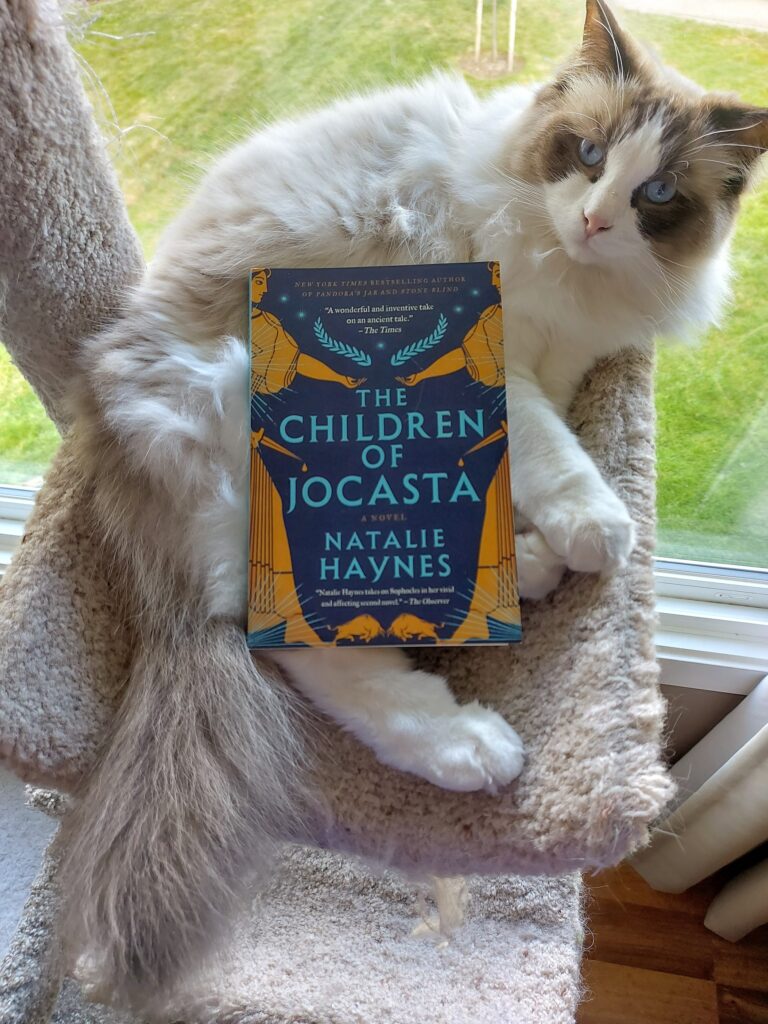The Children of Jocasta by Natalie Haynes

I decided to buy The Children of Jocasta because I have read Natalie Haynes’s other books, but I’ll admit that I am feeling fatigued with Greek mythology and took awhile to get around to reading this novel. I ended up finding Haynes take on the Jocasta/Oedipus myth very interesting, and I’m glad I decided to read it instead of letting it languish in my TBR pile perpetually.
The Children of Jocasta is told from two perspectives. The first perspective the reader is introduced to is that of fifteen-year-old Ismene, an orphaned princess who lives a very sheltered life in her family’s palace. After surviving an assassination attempt, Ismene begins to realize that not everything is as it seems as someone is manipulating her family members like pieces on a chessboard.
The other perspective is that of Ismene’s mother, Jocasta, who at fifteen is forced to marry an old man, Laius, the king of Thebes. After Laius dies, Jocasta becomes the ruler of Thebes and marries a man much younger than her, Oedipus. If you are familiar with the Oedipus myth, then you might have an idea of where Jocasta’s story is going, except that Haynes puts her own spin on it.
The Children of Jocasta does not have anything new to say about the roles of women in society, or how easily people can turn against a woman they once adored, but I was intrigued by Jocasta and Ismene’s stories and the revelations that led to the destruction of their family. According to Greek myth, Jocasta is a tragic figure, but in The Children of Jocasta she becomes a hero for her family, and her strength lives on in her daughter.